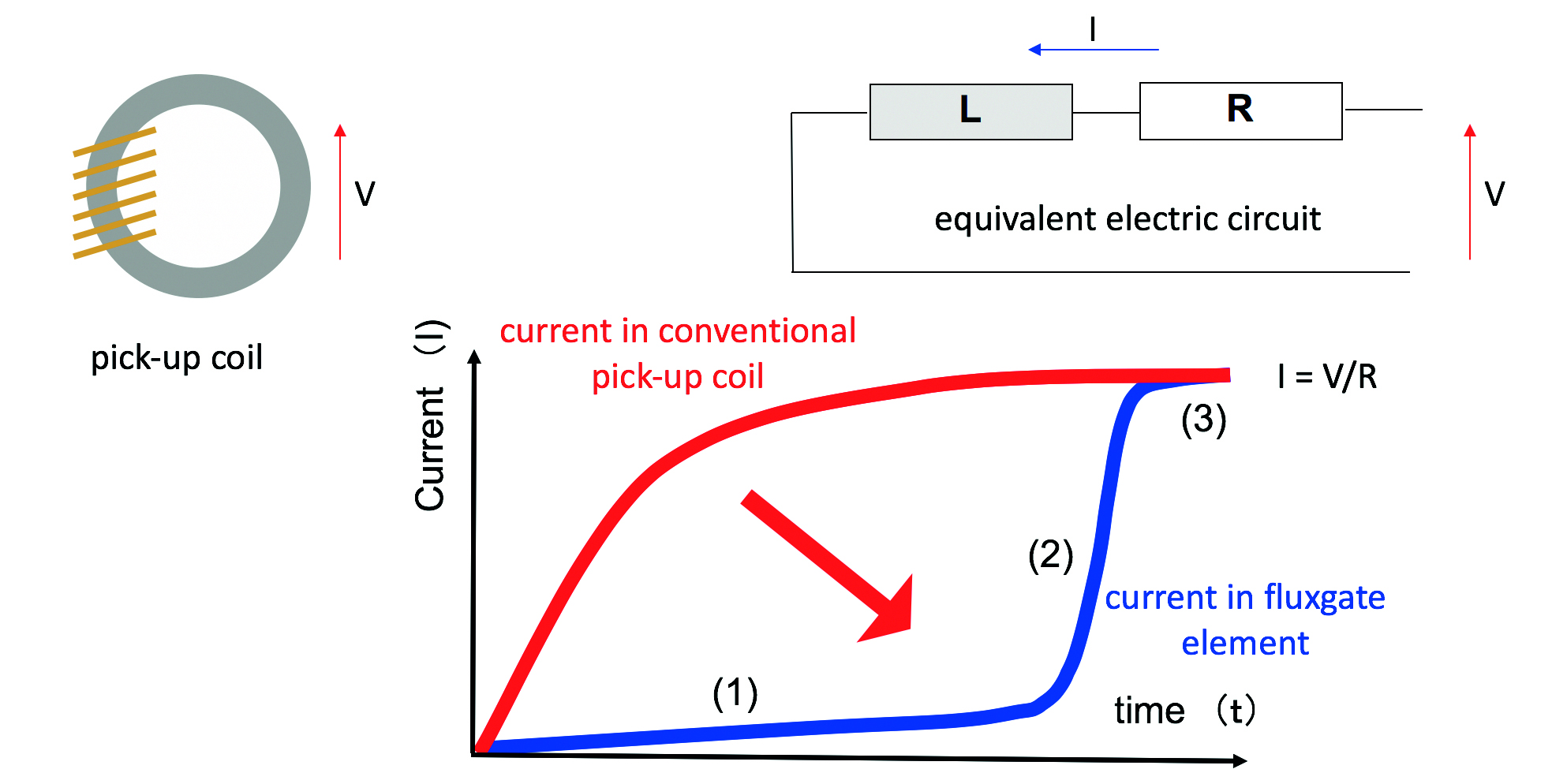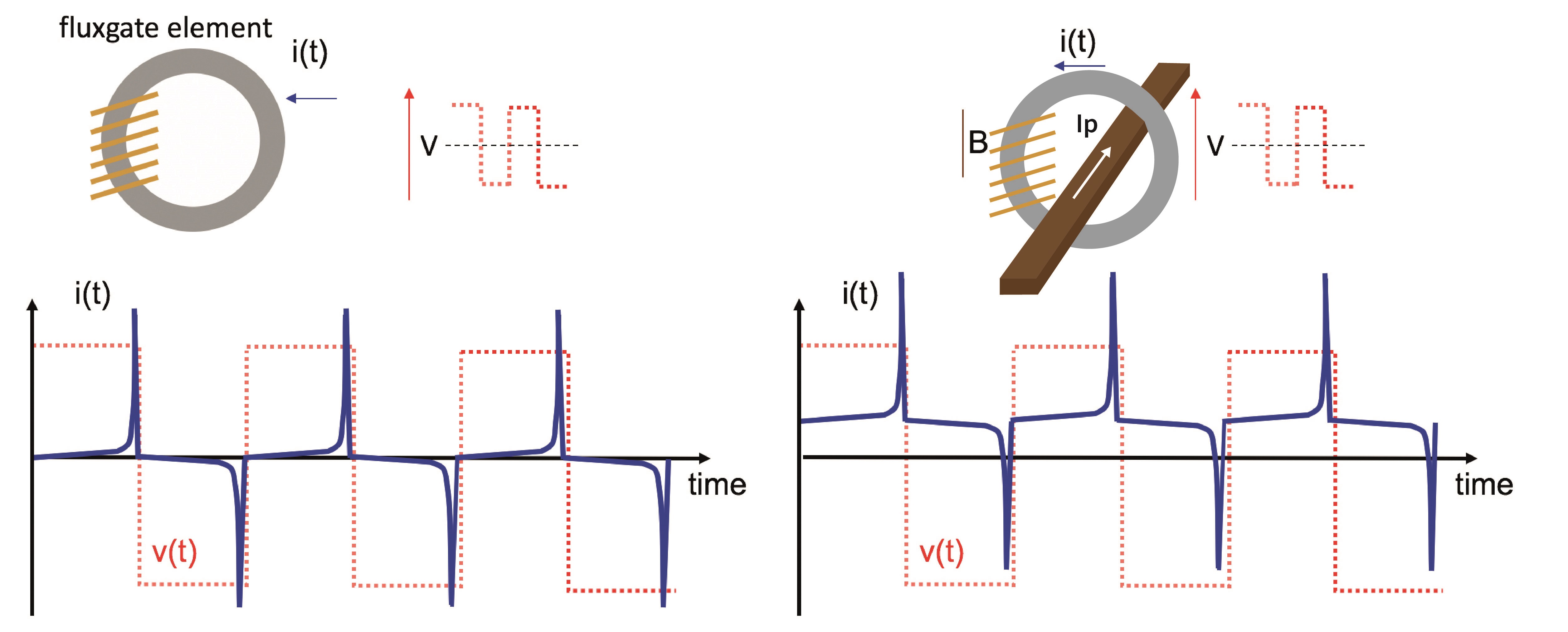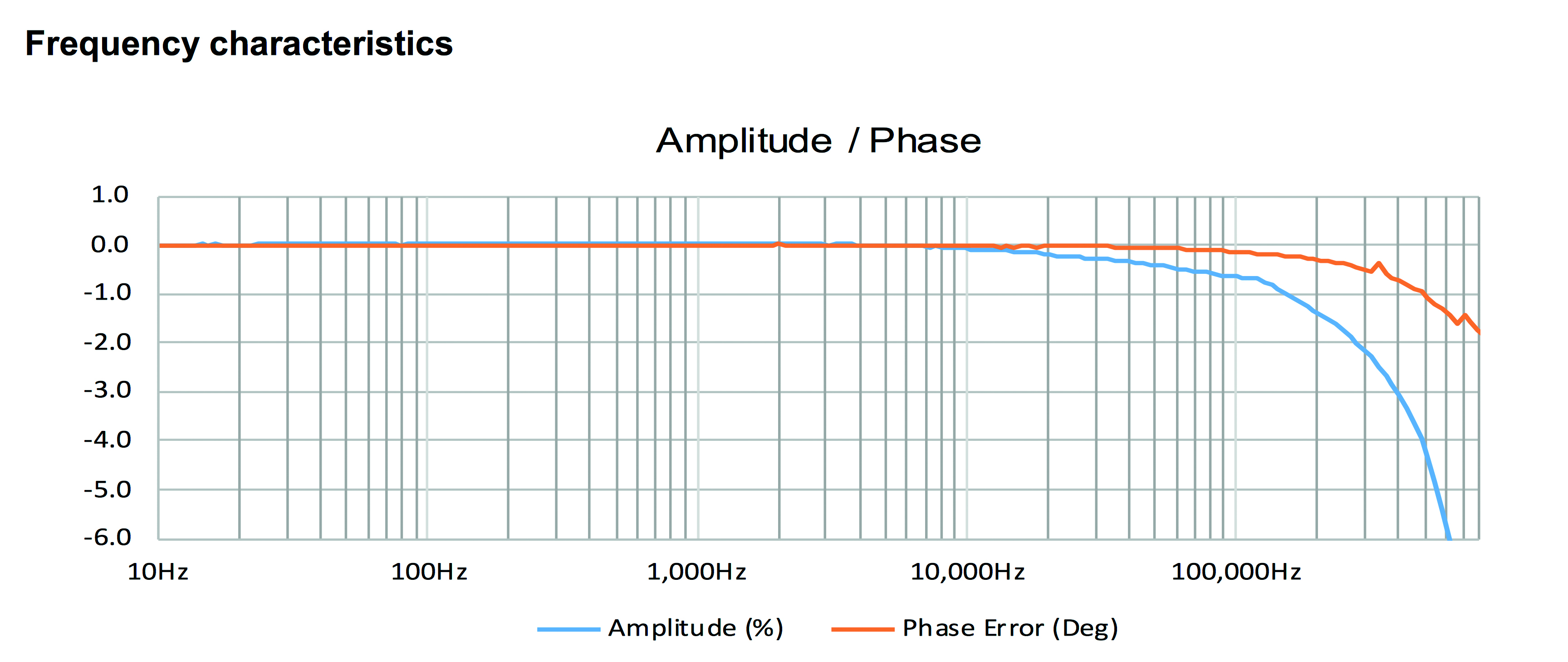Achieving very precise measurement
There are many different types of current measurement technologies, from basic shunt and Hall Effect devices to more complex systems, explains Loic Moreau, Danisense
The determining factor is usually the accuracy required, with emerging eV, solar, traction and power grid applications demanding accuracy levels to 100s of parts per million (ppm), while medical magnetic resonance imaging (MRI) equipment and physics institute accelerators can require single figure ppm performance. At these higher levels, simple devices cannot deliver. Now, Danisense offers DC and AC current sense transducers based on its Fluxgate technology which provides measurements down to one ppm.

Figure 1: Comparison of normal current behaviour (red line) and through the Fluxgate element (blue line)
The proprietary fluxgate is a closed loop compensated technology with fixed excitation frequency and second harmonic zero flux detection. The magnetic field in the toroid generated by the primary current is counteracted by the compensating secondary current generated by the integrator. Fluxgate detects magnetic fields in the toroid from DC to less than 100Hz at sub ppm levels and tells the integrator to compensate for them. At higher frequencies, the feedback winding detects magnetics fields in the toroid at ppm levels and again tells the integrator to compensate for them. Figure 1 compares how the current behaves normally and the Fluxgate element. Through a pick up coil wound on standard magnetic materials, the current is linear until saturation. However, if magnetic materials for the core are chosen for their deep saturation and sensitivity, the graph changes to show a definite step change.
Signal processing
Figure 2 shows the effect of applying a square voltage, resulting in sharp positive and negative signals. If a primary DC current Ip through a wire conductor is introduced, a DC magnetic field is added which shifts the signal (shown right).

Figure 2: Simplified plot showing the effect of applying a square voltage (left) resulting in sharp positive and negative signals
An advanced signal processing is applied and by using second harmonics the values for the new signals can be extracted to provide a measurement of the current in the conductors and its DC current value. This is the basic FluxGate (or zero-flux) technology. (This can be supplemented with an additional AC feedback winding to extend the frequency range of AC current measurements.)
A simple, single Fluxgate structure and magnetic core will provide accurate DC and low frequency AC measurements but has very low bandwidth so is not suitable for full bandwidth AC measurement. Effects of temperature and other environmental conditions mean that the magnetic field can drift. Some manufacturers use electronic compensation circuitry, which adds cost and complexity, and can also be prone to inaccuracy. Using a dual balanced Fluxgate structure with two magnetic cores in opposition, similar in concept to a Wheatstone bridge, provides natural compensation, eliminating the effect of any drift. In order for the two Fluxgate elements to balance each other, they must be perfectly matched. The company keeps all critical manufacturing stages in-house at its facility in Denmark. Founders and key employees possess specialised knowledge about high precision current transducers, enabling the company to develop the ‘secret sauce’ to manufacture the tightly-matched Fluxgate elements.
EV and HEV test benches
The company’s DS series covers 200 to 10,000A (DS200 to DR10000 models). Linearity is 0 to FS and offset stability with time is less than 0.1ppm/month with a flat bandwidth (DC to around several hundred kHz). Figure 3 shows phase shift for AC measurement and both current output and voltage output models are available. Aluminium housings provide immunity to electro-magnetic and common mode noise (dv/dt).
 Figure 1: Comparison of normal current behaviour (red line) and through the Fluxgate element (blue line)
Figure 1: Comparison of normal current behaviour (red line) and through the Fluxgate element (blue line)
The company recently added the DM1200, capable of measuring signals up to 1200A rms and 1500A DC. Specifically targeting the EV and hybrid EV (HEV) test benches markets which requires higher power converters that can be rapidly-charged, it has a large, 45mm diameter aperture which makes testing easier and more cost effective, as frequent installation and replacement of the system under test can be performed without having to remove the primary cable connector.
Switching for SiC and GaN
Zero-flux Fluxgate technology enables linearity of less than 1ppm with a very low offset of 12ppm and very low amplitude and phase shifts. These parameters are critical for accuratemeasurement of the efficiency of the converter, as they cause measurement errors.
The DM1200 also features a high bandwidth of up to 300kHz, to match increased switching speeds, especially of SiC and GaN devices. A metal body is used as a shield to protect against EMC disturbances caused by high frequency signals. Horizontal and vertical fixations are included to provide flexibility for the test bench mechanical design.
Perhaps the most demanding application for any current sense transducer is within the power supply for particle accelerators. The company is especially proud that it has an active program with CERN.
PCIM Europe Visit Danisense at ZES Zimmer - Hall 9-320










